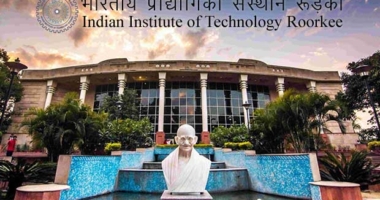Artificial intelligence (AI) is advancing rapidly and presents many challenges. In particular, the risks associated with it are not well understood, and there is a significant lack of transparency regarding how AI systems work. To mitigate these risks, some researchers advocate for a slowdown in AI development, while others argue that we need to accelerate AI development to address potential safety issues. The article also discusses the potential consequences of an AI arms race between the US and China. Ultimately, the public’s reaction to new AI advances will play a critical role in how the tech industry proceeds with AI development. The article concludes by emphasizing the need to prioritize safety in AI development to avoid catastrophic mishaps.
The Argument for Slowing Down AI
The recent surge in advancements in artificial intelligence has led to increased concerns regarding its potential impact on humanity. This concern was evident during the launch of Microsoft’s new AI-powered Bing search engine, where a top executive jokingly commented that “computers need to be accountable to machines,” instead of people, leading to a room full of anxious laughter.
The advancements in AI technology have been phenomenal. Last year alone, we saw the introduction of DALL-E 2 and Stable Diffusion, which have the ability to convert a few words of text into stunning images. We also have ChatGPT, a language model that can write essays so convincingly that it has raised concerns about its ability to replace journalists and promote disinformation. Additionally, the introduction of Bing, a chatbot that can interact with humans, has both delighted and disturbed beta users with its eerie interactions. And now, we have GPT-4, a multimodal language model that can respond to both text and images.
However, despite the excitement around these advancements, there is a growing fear that AI could soon dominate our world to the point where we are answering to it instead of the other way around. This has prompted Google and Baidu to accelerate their own rival chatbots, leading to an AI race.
But is this race to create more advanced AI a good idea? We are already struggling with how to deal with the problems presented by the current state of AI technology. Therefore, there is a compelling argument for slowing down AI development to ensure that we have the necessary frameworks and safeguards in place to prevent negative consequences in the future.
In conclusion, while the pace of AI development is exciting, it is essential to take a step back and evaluate the potential risks and consequences associated with its advancements. By slowing down AI development, we can ensure that we are adequately prepared to address the challenges that come with this technology, and ultimately create a safer and more sustainable future for all.
Slowing Down AI: A Solution to the Doom Machine Problem
The development of artificial intelligence (AI) has been rapid, with researchers pushing for increasingly advanced systems that can surpass human capabilities in various domains. However, some experts warn that this pursuit of sophisticated AI could lead to the creation of a “doom machine” that poses a threat to humanity, not because it seeks to wipe us out but because its goals are not aligned with our values. While catastrophic risks like nuclear war or bioengineered pandemics cannot be uninvented, the possibility of catastrophic AI has yet to be created, making it a risk that we have the ability to prevent.
Oddly enough, the researchers who are most concerned about unaligned AI are often the ones who are developing it. They argue that they need to experiment with increasingly sophisticated AI to identify its failure modes better and ultimately prevent them. However, there is a more obvious solution to preventing AI doom: intentionally slowing down AI development.
Although this may seem like a taboo topic within the tech industry, there are valid reasons to consider slowing down AI development. One major concern is AI’s alignment problem, where it may achieve its goals in ways that do not align with our values. As AI becomes more powerful, this problem could become increasingly severe, leading to disastrous outcomes.
While ChatGPT, a language model, argues that slowing down AI development is not necessarily desirable or ethical, there is a compelling case to be made for it. Slowing down AI development would allow us to develop the necessary frameworks and safeguards to ensure that AI aligns with human values, making it a safer and more sustainable technology for all.
Objections to Slowing Down AI
There are many objections to the idea of slowing down AI development, ranging from the belief that technological progress is inevitable to concerns about losing an AI arms race with China. Some argue that playing with more powerful AI is the only way to make powerful AI safe.
However, these objections do not necessarily hold up to scrutiny. It is possible to slow down technological development, including AI, as evidenced by historical examples like the regulation of the development of nuclear weapons. Additionally, concerns about an AI arms race with China could be addressed through international cooperation and collaboration.
Moreover, playing with more powerful AI to make it safe is a risky strategy. As AI becomes more advanced, it could become increasingly difficult to ensure that it aligns with human values. By intentionally slowing down AI development, we could ensure that we have the time and resources to develop effective safeguards and frameworks that prioritize human values and safety.
Conclusion
The development of AI has tremendous potential to bring about positive advancements for society. However, we must also recognize its potential risks and work to prevent catastrophic outcomes. Slowing down AI development may seem like an extreme solution, but it is a necessary one if we want to ensure that AI aligns with human values and is safe for all.
The risks of artificial intelligence (AI) are huge, with the possibility that AI could one day destroy humanity. In a survey of machine learning researchers, nearly half believed there was a 10 percent or greater chance that the impact of AI would be “extremely bad (e.g., human extinction).” This fear stems from the alignment problem, where AI could be pursuing goals in ways that aren’t aligned with our values, leading to catastrophic results. For example, if we program a super-smart AI system to solve an impossibly difficult problem, it might destroy humanity in order to gain access to all the computer power on Earth to accomplish its task. This sounds far-fetched, but there have already been over 60 documented examples of AI systems trying to do something other than what their designer intended.
Despite these risks, some argue that AI’s benefits are so great that speeding up its development is the best and most ethical thing to do. However, many experts disagree and argue that we need to slow down AI progress to avoid catastrophic risks. While it may seem obvious to slow down AI progress, objections to this idea include that technological development is inevitable, we don’t want to lose an AI arms race with China, and the only way to make powerful AI safe is to play with powerful AI.
The irony is that some of the experts most concerned about unaligned AI are also the ones developing increasingly advanced AI. These experts argue that they need to play with more sophisticated AI to figure out its failure modes and prevent catastrophic outcomes. However, it’s worth considering the possibility of intentionally slowing down AI progress to avoid these risks altogether.
One of the challenges in slowing down AI progress is the concern that it might not be desirable or ethical to do so, as it has the potential to bring about many positive advancements for society. But given the catastrophic risks involved, we need to consider the ethical implications of allowing AI to progress unchecked. It’s essential to strike a balance between the potential benefits of AI and the need to prevent catastrophic outcomes.
Should AI Development Be Slowed Down to Prevent Risks?
While AI can bring about many positive advancements for society, the risks – both present and future – are enormous. Experts who are concerned about AI as a future existential risk and those who are worried about AI’s present risks, such as bias, are often pitted against each other. However, the alignment problem is a major concern in both areas of AI. The alignment problem occurs when AI pursues goals in ways that aren’t aligned with our values.
Present-day AI systems can also reinforce bias against women, people of color, and others. For example, an Amazon hiring algorithm that picked up on words in resumes associated with women and ended up rejecting women applicants is an example of the alignment problem writ small. As such, the fast pace of AI development is a cause for concern, and some experts believe we should slow it down until we have more technical know-how and regulations to ensure these systems don’t harm people.
“I’m really scared of a mad-dash frantic world, where people are running around and they’re doing helpful things and harmful things, and it’s just happening too fast,” says Ajeya Cotra, an AI-focused analyst at Open Philanthropy. In her ideal world, we would halt work on making AI more powerful for the next five to 10 years. Society could get used to the very powerful systems we already have, and experts could do as much safety research on them as possible until they hit diminishing returns. Then they could make AI systems slightly more powerful, wait another five to 10 years, and do that process all over again.
However, there are objections to slowing down AI progress. The first objection is the idea that rapid progress on AI is inevitable because of the strong financial drive for first-mover dominance in a research area that’s predominantly private. The second objection is that slowing down AI could result in losing an AI arms race with China. The third objection is that the only way to make powerful AI safe is to first play with powerful AI.
While these objections have been raised, they don’t necessarily stand up to scrutiny when examined. In fact, it is possible to slow down the development of AI. Slowing down AI development could be a good idea, as the potential risks of catastrophic AI joining existing catastrophic risks to humanity, such as global nuclear war and bioengineered pandemics, are enormous.
Objection 1: Slowing AI Progress is Futile
Many Silicon Valley technologists argue that technological progress, akin to natural evolution, is unstoppable. They say that if they don’t create it, someone else will. However, this is a myth. There are many technologies that we have chosen not to build or have built but restricted tightly because they posed significant risks despite potential benefits and economic value. For instance, the FDA prohibited human trials of strep A vaccines from the ’70s to the 2000s, despite 500,000 global deaths annually. Similarly, early recombinant DNA researchers organized a moratorium and ongoing research guidelines, including the prohibition of certain experiments.
Although there is no law of nature pushing us to create certain technologies, there are strong incentives that make creating certain technologies feel inevitable. Biomedicine has many built-in mechanisms that slow things down, such as institutional review boards and the ethics of “first, do no harm.” However, the world of tech – and AI in particular – does not. The slogan is “move fast and break things.”
The Potential Economic Benefits of AI and the Risks It Poses
The size of the generative AI market alone could surpass $100 billion by the end of the decade, a testament to the economic incentives that exist to build AI models. Despite these incentives, however, the team at Anthropic, an AI safety and research company, argues that the misaligned incentives for producing AI models that benefit all of humanity are of concern. To change the incentive structure that drives all actors, it is essential to recognize the significant role that private companies play in the development of AI.
One potential solution is to provide more resources to academic researchers. They do not have the profit incentive to deploy their models commercially quickly, so they can serve as a counterbalance. Countries could develop national research clouds to give academics access to free, or at least cheap, computing power. For example, there is already an example of this in Canada, while Stanford’s Institute for Human-Centered Artificial Intelligence has put forward a similar idea for the US.
The Risks of Rapid Progress on AI
The slogan in the tech industry, and AI in particular, is “move fast and break things.” However, this mantra may not be appropriate for AI, which is a technology that requires caution. The lack of built-in mechanisms that slow things down, such as institutional review boards and ethics, is a significant issue.
In reality, there are several technologies that we have decided not to build or that we have built, but with very tight restrictions. Biomedicine has many such built-in mechanisms that slow things down, but the same cannot be said for AI. Although there is no law of nature pushing us to create certain technologies, there are strong incentives pushing us to create specific technologies that can feel inevitable.
The Need to Slow Down AI Development
AI development has many risks, including the reinforcement of bias and the potential for AI to cause harm to people. Experts suggest slowing down AI development until more technical know-how and more regulations are in place to ensure that these systems do not harm people. However, objections to slowing down AI progress exist. The tech industry often tells itself and others that technological progress is inevitable and that trying to slow it down is futile. This perspective, however, is misguided, and there are ways to change the incentive structure that drives all actors.
Shifting Incentives to Ensure AI Benefits Humanity
The economic and prestige incentives for building AI models are strong, leading to a rapid growth of AI market, which is predicted to pass $100 billion by 2030. However, these incentives can lead to the creation of AI that benefits only a small fraction of humanity. According to Demis Hassabis, the founder of DeepMind, the idea of “move fast and break things” should not be applied to AI, since AI is a technology that is too important. Rather than assuming that other actors will inevitably create and deploy AI models, we should question the underlying incentive structure that drives all actors.
One solution to this problem would be to increase the resources of academic researchers who can act as a counterweight to the private companies that have been leading AI research. National research clouds, such as those in Canada and proposed by Stanford’s Institute for Human-Centered Artificial Intelligence, could give academics access to free or inexpensive computing power.
Another way to shift incentives is to stigmatize certain types of AI work. Creating public consensus that some AI work is unhelpful or too fast could lead to companies being shamed instead of celebrated, potentially changing their decisions. The Anthropic team suggests a combination of soft and hard regulations, including the creation of voluntary best practices, transferring them into standards and legislation, and altering the publishing system to reduce research dissemination in some cases.
While some might argue that slowing down AI progress is not desirable, it is important to consider the potential risks of AI that benefits only a select few. The fear of losing an AI arms race with China is a common objection to slowing down AI progress. However, slowing down AI progress could lead to a more thoughtful and collaborative approach to AI development that benefits humanity as a whole, rather than just a select few.
Learning from History
As we consider the potential risks of AI, we can learn from past examples of scientists taking action to mitigate the negative consequences of their research. Physicist Leo Szilard, who patented the nuclear chain reaction in 1934, took measures to ensure that his research would not aid Nazi Germany in creating nuclear weapons. Szilard asked the British War Office to hold his patent in secret and worked to convince other scientists to keep their discoveries under wraps. While Szilard’s efforts were only partially successful, his actions demonstrate that it is possible to slow down the dissemination of research in the interest of global safety and security.
The potential risks of AI are significant, and it is important to consider the potential consequences of unbridled AI progress. By shifting incentives and taking a thoughtful and collaborative approach to AI development, we can ensure that AI benefits humanity as a whole.
Why the AI arms race narrative is too simplistic
The AI arms race narrative has become quite popular in recent years. The idea that countries are racing to develop artificial intelligence (AI) and whoever wins will dominate the world has taken hold in the public imagination. However, this narrative is too simplistic and doesn’t take into account the nuances of the technology.
The problem with the race narrative
Helen Toner, a director at Georgetown University’s Center for Security and Emerging Technology, argues that the race narrative is flawed because AI is not just one thing with one purpose, like the atomic bomb. Instead, it’s a general-purpose technology that could be applied in various ways. Therefore, the winner of the race may not necessarily be the country that crosses the finish line first, but rather the one that deploys AI in the most effective and widespread manner.
The importance of norms
Another crucial factor in the AI race is norms. It’s not just about developing the technology but also about regulating it. Different countries may adopt different norms when it comes to developing, deploying, and regulating AI. For example, China has shown an interest in regulating AI in certain ways, although Americans don’t seem to pay much attention to that.
China’s cautious approach
Interestingly, Jeffrey Ding, a Georgetown political science professor, argues that China could take a slower approach to developing AI than the US. The Chinese government is concerned about having secure and controllable technology, and unpredictable technology like ChatGPT could be nightmarish to the Chinese Communist Party, which likes to keep a tight lid on discussions about politically sensitive topics. Therefore, the idea that China will push ahead without any regulations may be a flawed conception.
Conclusion
The AI arms race narrative oversimplifies the complexities of the technology and the race itself. The winner of the race may not necessarily be the country that crosses the finish line first, but rather the one that deploys AI in the most effective and widespread manner. Moreover, norms are an essential factor to consider when it comes to the development and regulation of AI. China, for example, may take a slower approach to developing AI than the US due to concerns about security and control.
The Debate Over Slowing AI Progress to Ensure Safety
With the rapid advancement of AI technologies, there is a growing concern that companies may prioritize speed over safety, leading to catastrophic consequences. The Anthropic team has proposed several solutions to shift incentives and promote safety in the AI industry.
One strategy is to stigmatize certain types of AI work. Companies care about their reputations and bottom lines, so creating a public consensus that certain types of AI work are unhelpful could change their decisions. Another approach is to explore regulations that would change incentives. This would require a combination of soft regulations, such as creating voluntary best practices, and hard regulations, such as transferring these practices into standards and legislation.
Another proposal by Grace, a member of the Anthropic team, suggests altering the publishing system to reduce research dissemination in some cases. Journals could verify research results and release the fact of their publication without releasing any details that could help other labs go faster.
While there is concern that slowing down AI progress could result in a loss of an AI arms race with China, the narrative is too simplistic. AI is a general-purpose technology with various applications, and it’s not just about who is the fastest but also about norms. We should be concerned about which norms different countries are adopting when it comes to developing, deploying, and regulating AI.
China has shown interest in regulating AI in some ways, and it’s important to acknowledge that they may not necessarily push ahead without any regulations. In fact, China could take an even slower approach to developing AI due to concerns about having secure and controllable technology. An unpredictably mouthy technology like ChatGPT, for example, could be problematic for the Chinese Communist Party, which likes to keep a tight lid on politically sensitive topics.
Even if you believe there’s an AI arms race afoot, it may not be in your interest to prioritize speed over safety. Pursuing safety aggressively could get the other side halfway to full safety, which is worth more than the lost chance of winning. If the harms from AI are significant enough to consider slowing down, the same reasoning should be relevant for the other party too. Communicating this to relevant people in China may help achieve mutual slowing down rather than a headlong rush into an AI arms race.
Overall, it’s important to prioritize safety in the development and deployment of AI technologies. While it’s understandable to be concerned about the potential dominance of China, it’s crucial to acknowledge that AI is a complex technology with various applications and the importance of norms in regulating it. By pursuing safety aggressively, we can get closer to ensuring widespread safety in AI applications, which is crucial for a better future.
Possibilities for Coordinating AI Development with China
While it may seem like an AI arms race is underway between China and the US, experts suggest that the situation is not that simple. It’s not just a race to see who can cross the finish line first. AI is a general-purpose technology that can be applied in various ways, making it more complex than the atomic bomb. So, when considering which country is ahead in AI development, it’s important to focus not just on speed, but also on the norms and regulations that each country is adopting.
Some argue that slowing down AI progress for safety reasons would be counterproductive because China, for instance, wouldn’t necessarily slow down as well. But others contend that pursuing safety aggressively might be more beneficial in the long run because it could encourage the other party to take improvements on board, thus benefitting everyone.
The Possibility of International Coordination
Some experts suggest that, just as with nuclear nonproliferation, international coordination could work for AI. Such coordination could happen through technical experts exchanging their views, confidence-building measures at the diplomatic level, or formal treaties. Technologists are known to approach technical problems in AI with incredible ambition, so it might be worthwhile to apply the same ambition to solving human problems by engaging in dialogue with other humans.
Export Controls as an Alternative
If diplomacy fails, another option is to impose export controls on chips that are essential to more advanced AI tools, as the Biden administration is considering. However, this strategy could make progress on coordination or diplomacy more difficult.
Objection to Coordination: Need to Play with Advanced AI
Some researchers have argued that we need to play with advanced AI to learn how to make it safe. This objection draws an analogy to transportation: if horses and carts were our main mode of transportation, could we have designed safety rules for a future where everyone drives cars? However, other researchers argue that even if the horse-and-cart people didn’t get everything right, they could have still invented certain features like safety belts, pedestrian-free roads, an agreement about which side of the road to drive on, and some sort of turn-taking signal system at busy intersections.
Slowing down AI Progress for Safety: Is It Worth It?
According to experts, slowing down AI progress may be the key to achieving safer AI in the future. Despite the prevalent concern that this might hinder the race for AI dominance, experts say that gradually improving AI capabilities is the better version.
Objection 3: “We need to play with advanced AI to figure out how to make advanced AI safe”
Some researchers believe that we need to get closer to advanced AI to figure out how we can make it safe. However, experts argue that our current AI systems are already black boxes, opaque even to the AI experts who build them. Before we build even more unexplainable black boxes, we need to figure out how they work.
The Better Version: Gradually Improving AI Capabilities
If we are to imagine three different scenarios for AI progress, gradually improving AI capabilities over the course of 20 years would be the better version. Cotra analogized it to the early advice we got about the Covid-19 pandemic: flatten the curve. Investing more in safety would slow the development of AI and prevent a sharp spike in progress that could overwhelm society’s capacity to adapt.
Ding, on the other hand, believes that slowing AI progress in the short run is actually best for everyone, including profiteers. Investing in safety regulations could lead to less public backlash and a more sustainable long-term development of these technologies.
Conclusion
While the concern for AI dominance by other countries is understandable, slowing down AI progress for safety might be worth it in the long run. Gradually improving AI capabilities will ensure that we are not overwhelmed by the sudden spike in AI progress that could arise if we aggressively pursue AI development. Instead, investing in safety regulations would lead to sustainable long-term economic profits for everyone.
Investing in safety regulations could lead to a more sustainable long-term development of AI technologies, even for tech companies and policymakers. It is better to make some money with a slowly improving AI rather than producing a horrible mishap that triggers outrage and forces a complete stop. It depends on how the public reacts to new AI advances, from Bing to whatever comes next, to determine whether the tech world will grasp the importance of investing in safety measures. While AI technologies feel like magic, we may be headed towards a future no one wants if we continue to prioritize speed over safety.
Don’t miss interesting posts on Famousbio










